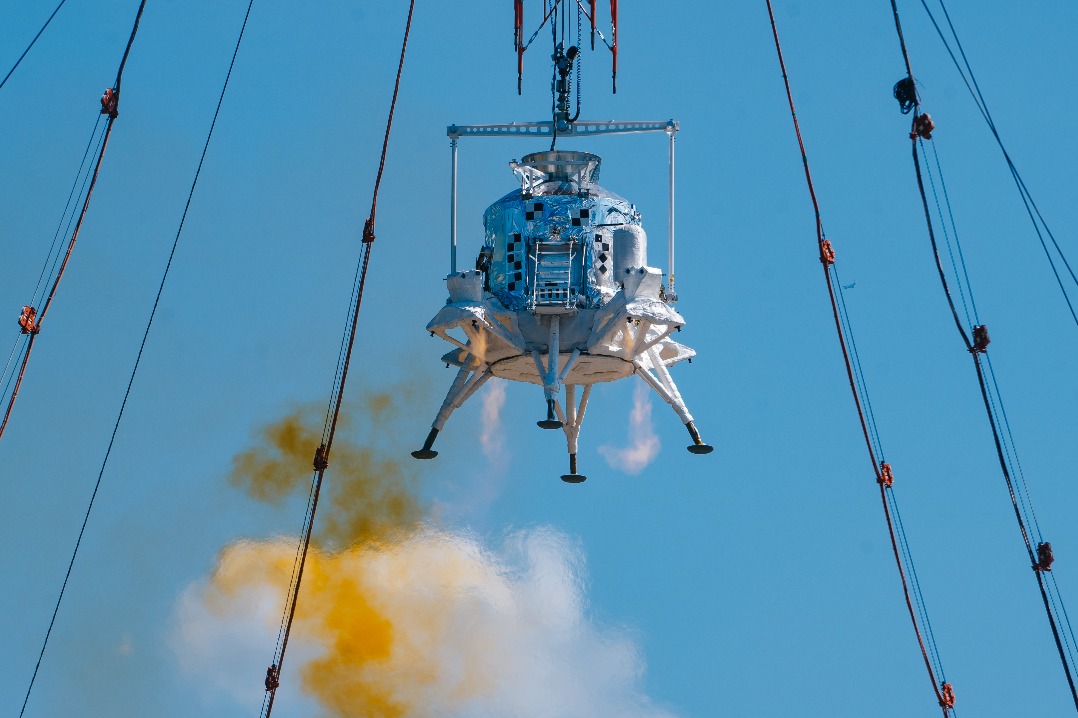What they say

Editor's Note: Five model employees from emergency management systems who were recognized as outstanding workers this month introduced their work and how their efficiency improved at a news conference organized by the Ministry of Emergency Management on Tuesday.
My station is responsible for an ancient architectural complex called Three Lanes and Seven Alleys. We protected the area from big fires for 30 years and no fire occurred there for eight years. In addition to firefighting, we now take on more kinds of tasks, including earthquake rescue and accident rescue in mountains, waters and chemical plants. We stand by all year round. Festivals and holidays are our peak work time.
Chen Huihua, 32, head of a firefighting rescue station in Fuzhou, Fujian province
I have been engaged in safety production supervision and management for more than 20 years. Emergency management work tests one's experience and trains one's willpower. Over the years, I have been helping companies conduct risk identification and finding various hidden dangers for them. The hardest thing used to be making companies implement their safety measures well. But as laws and regulations improved, companies have been more willing to cooperate with us and the number of accidents in our district has decreased year-on-year.
Wang Zhaoge, 49, staff member at an emergency management bureau in Sucheng district, Suqian, Jiangsu province
My daily work is to rule out risks in dark and humid coal mines several hundred meters underground. A little carelessness may cause miners to get injured or even lose their lives. We must do our best to prevent accidents and ensure safe production. We have built smart systems. For example, a headlamp for miners that can also provide positions and the drones used for inspections in remote places greatly improved our efficiency. Also, with the implementation of new laws and regulations, including the Safety Production Law, coal mine owners have greatly raised their awareness of safety management.
Liu Xiaoshu, 38, staff member at the National Mine Safety Administration's Shaanxi branch
Our team is responsible for rescue tasks during forest fires as well as earthquakes and geological disasters and floods. For example, from the air we can put out fires on cliffs that are inaccessible to ground rescuers. This year, floods hit northern areas and we conducted flights above affected areas for about half a month to inspect flood conditions and provided abundant data for disaster relief. We changed from a single-tasked team to a multitasked one and are improving air rescue methods through gathering experience at home and abroad.
Lan Hailiang, 37, head of the Daqing Air Rescue Team of the ministry's Forest Fire Service
Outdoor sports are highly risky. I have been involved in outdoor rescue activities since 2003. After the 2008 earthquake in Wenchuan, Sichuan province, I took part in a rescue that lasted a year. After that, some friends and I set up a mountain rescue team that was later developed into a federation. Since the Ministry of Emergency Management was founded in 2018, we found ourselves a clear position as an important supplement in the national emergency system.
Shi Xin, 51, head of the Shenzhen Rescue Volunteers Federation





Today's Top News
- China completes first landing, takeoff test of manned lunar lander
- China's new free preschool policy to save families $2.8 billion
- China's foreign trade rises 3.5% in first seven months
- China's foreign trade up 3.5% in first seven months
- 25-yuan roast duck reflects progress of rural vitalization
- Xi set stage for rise of cultural powerhouse






























